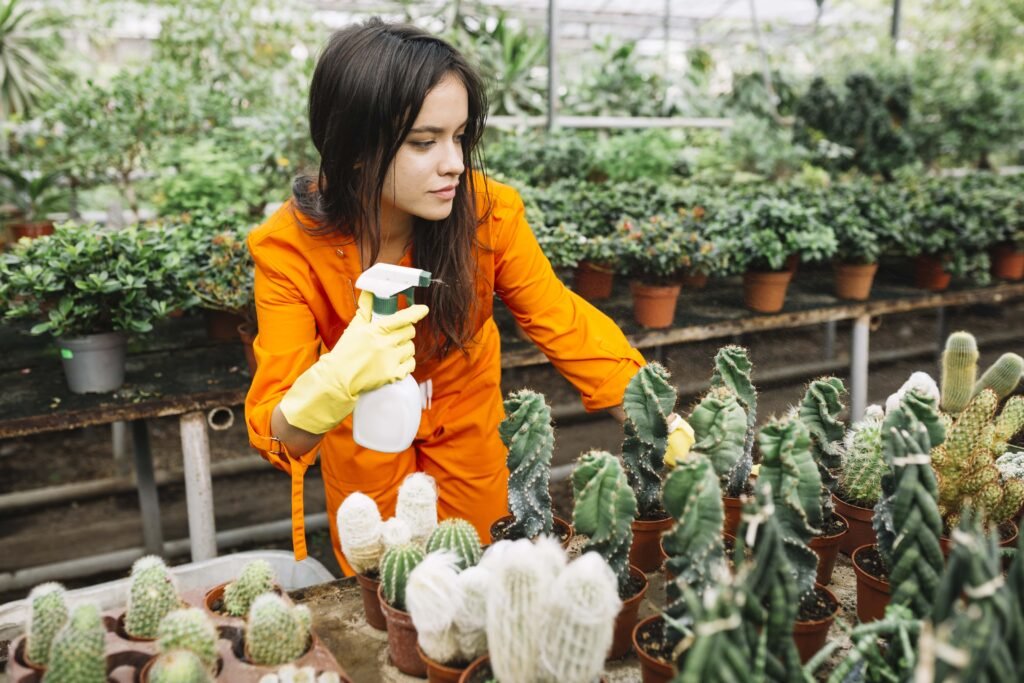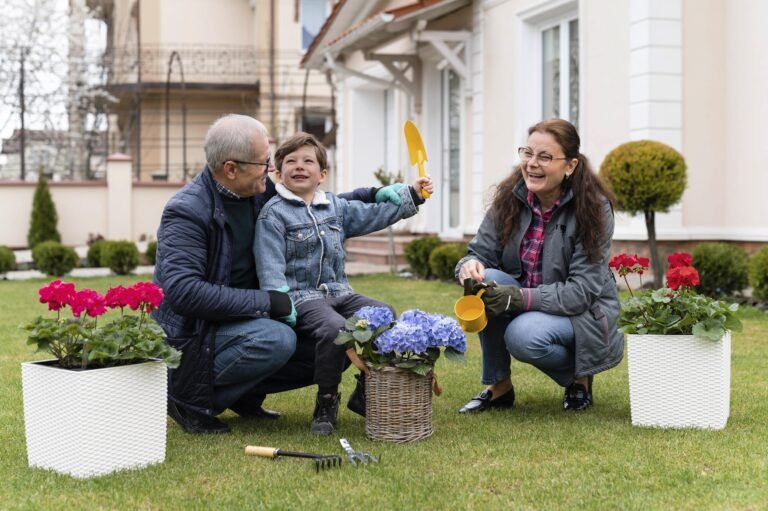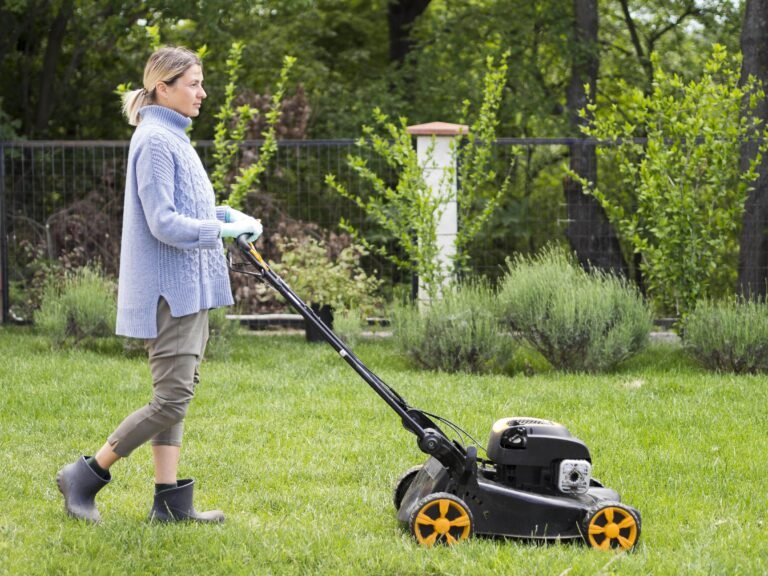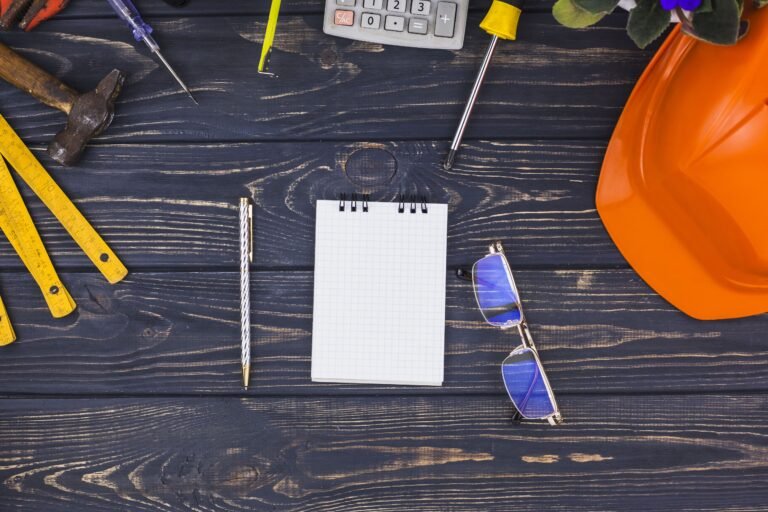How To Start A Vegetable Garden Indoors?
Starting a vegetable garden inside your home is a great idea, especially if you don’t have space outside or if you want to start growing plants early. When you garden indoors, you can manage the conditions your plants grow in, making sure they do well no matter what the weather is like outside. Also, it’s really rewarding to see your vegetables grow from tiny seeds to full-grown plants right in your own home.
To start, you’ll need a few basic things: seeds, pots, potting soil, and a source of light. It’s very important to pick the right vegetables to grow indoors, as some do better inside than others. Herbs, lettuce, radishes, and peppers are good choices for beginners. With the right equipment, a bit of patience, and proper care, you can grow a beautiful indoor garden that gives you fresh and delicious vegetables right at your fingertips. Keep watching as we go through the steps to start your indoor vegetable garden successfully!
TIPS FOR INDOOR GARDENING
Getting into indoor vegetable gardening will require you to consider a few key success tips. It is all about the location inside your house. You will need a location where there is abundant natural light; this would mean 6 to 8 hours a day. Ideally, you would locate most of your vegetables in south-facing windows. However, if you cannot provide the level of light required, consider purchasing grow lights. Grow lights would ensure that plants can attain the needed spectrum of light that promotes growth. Temperature and humidity are other factors that will play key roles in maintaining a healthy indoor garden. Most vegetables prefer a temperature between 65°F and 75°F. If your house is a little cooler, you may want to invest in a heat mat for germination. Again, consistent humidity helps prevent issues such as leaf tip burn. If you have a small humidifier or a tray of water, set these near your garden to help manage dry indoor air.
You also want good ventilation to prevent the likelihood of fungal diseases and to ensure that air circulates your plants as well as it would out in nature. A small, low-speed fan placed around your garden and not directly on top of it will do. Finally, good containers and soil will be the base of your plants. The containers must have enough drainage holes that water doesn’t log. Pair these with a high-quality potting mix designed especially for indoor plants, and you will be assured of an equal balance of nutrients, moisture, and aeration for your vegetables. This kind of preparation in the environment will no doubt lead to a flourishing indoor vegetable garden.
THINGS THAT ARE KEY FOR SUCCESSFUL INDOOR GARDENING
When growing an indoor vegetable garden, different issues are to be managed very carefully. Of these, the most prime importance goes to lighting. If natural light is not sufficient in the apartment, invest in energy-saving LED grow lights that give the complete spectrum of light to the plants for the process of photosynthesis. Fix the lights very close to the plant, ideally 2 to 4 inches above the seedlings. As the plants grow, the height can be increased. This way, the plants receive an optimum amount of light without the chance of getting scorched. The second most important aspect is water. Indoor plants will naturally require less water than outdoor plants mainly because they are not exposed to the same strength of the sun and elements. Over-watering can lead to root rot and other waterborne diseases. A good rule of thumb is that one has to water only when the top inch is dry. Remember, when you water, you must water thoroughly so that the moisture reaches the whole root system, and it is good to let the excess drain away.
Nutrition is also key. Since all these will be lacking when grown indoors, you will need to feed them. Nutrients are easily supplied with a balanced, water-soluble fertilizer used at half the recommended strength and applied about every couple of weeks. Indoor gardeners will also need to be on the lookout for over-fertilization, which can stunt or otherwise damage plant growth. Occasionally, indoor gardeners must manually pollinate their plants. Self-pollinating plants, such as tomatoes and peppers, might need a little help along the way. Gently shake your plants or transfer the pollen with a small paintbrush to mimic bees and wind and encourage fruit set and growth. And the usual watch out for pests and diseases. Regularly check your plants for any signs of pests or diseases. Common pests inside are aphids, spider mites, and whiteflies. Early detection of these and the proper response with organic controls can help keep your garden from getting too much damage. The best way to maintain health and productivity in your indoor garden is to be vigilant in care.
THE BEST VEGETABLES TO GROW INDOORS
Selecting just the right vegetables to grow indoors can make all the difference in the success and enjoyment of the project. These vegetables are better adapted to the conditions indoors, giving a good shot at growing without so much hassle regarding light and space. Here are some of the best:
- Lettuce and Greens: The best plants are used for indoor gardening because they grow rather quickly. They do not require much light either and can be placed on sills or grown under lights. Another advantage is that you get several harvests from a head by continuously picking the outer leaves and letting the inner ones continue to grow.
- Herbs: Most herbs enjoy indoor growing and take up very little space. Popular favorites like basil, cilantro, thyme, and parsley just to name a few will set up your cooking by placing them in a sunny window. They need little maintenance and are easy to look after.
- Radishes: As they are quick to grow and need very little space, radishes are very well-suited for indoor gardening. They can be harvested as soon as three weeks after planting, making them a great choice for beginning gardeners.
- Carrots: Growing root vegetables in an indoor setting might sound quite awkward, but carrots grow fairly well in a pot that is slightly deep and should have very loose, well-drained soil. Miniature or baby carrot varieties grow very well in such environments.
- Tomatoes: The plants can be grown indoors, but require a bit more work and space. Dwarf or cherry tomato varieties can work pretty well indoors as well. They require a lot of light, so a grow light is one of the most necessary accessories for your setting. Properly taken care of, they might bring continuous yields.
- Peppers: Small pepper varieties, such as chili peppers or baby bell peppers, can be well-grown in indoor gardens. Just like tomatoes, they require some light and warmth, which makes them a great option for indoor growing in set-ups that are properly managed with the help of grow lights.
This way, growing vegetables indoors can be a source of refreshing living space as well as a fresh produce source right at your fingertips. Begin with the easier selections and gradually experiment with more demanding plants as you feel your indoor gardening skills improve.
HOW TO START VEGETABLES INDOORS

Starting vegetables indoors is an invigorating project, and it all begins with knowledge and the basics of indoor planting and germination. So, here is a step-by-step guide to get your indoor vegetable garden up and running:
- Choose Good Containers: Start with deep containers so that there is plenty of room for roots to grow and containers with holes in the bottom to allow water to drain. Containers can be anything from traditional pots and planters to recycled containers provided they are clean with holes in the bottom.
- Choose the Right Soil: Pick out a good quality indoor plant potting mix. The mix should be light and well-drained. Do not use field soil as it is too heavy and may contain weed seeds and other pests.
- Plant Seeds: Refer to the seed packet for specific planting needs. In general, plant seeds at a depth of two to three times their diameter. Small seeds should be barely covered with soil. Larger seeds, like beans, should be planted deeper.
- Supply Adequate Light: Indoors, grow plants in a south window where they receive plenty of sunlight. In the absence of a south window, use special grow lights over the plants. Lights should be on about 12-16 hours a day to duplicate the day length.
- Maintain Proper Temperature: Most vegetables germinate best at temperatures between 65°F and 75°F. Some, like peppers and tomatoes, may require somewhat warmer temperatures. Keep your seedlings away from cold drafts and the excessive heat given off by appliances.
- Watering Needs: Water your seedlings so the soil stays uniformly moist but not soggy. A spray bottle can also be used to apply water gently, so it doesn’t displace your seeds. As the plants grow, you may change to a watering can to give a deeper watering that reaches the roots.
- Thinning Seedlings: When your seedlings develop their first set of true leaves, thin them. This means pinching off or carefully snipping out the weaker seedlings so the stronger ones have plenty of room. This is necessary to prevent them from competing with each other for light, nutrients, and space.
- Transplanting: If you start your seeds in small containers or seedling trays, you will need to transplant them into bigger pots as they continue to grow. Be very careful to handle the delicate seedlings gently during the transplant so you don’t damage the roots.
Going through these steps will help you start a broad range of vegetables indoors, setting the stage for success in your own indoor garden that will give your household a bountiful harvest of fresh produce all year long.
What are the Common Problems and Solutions?
Even though indoor vegetable gardening has many advantages, it also has its drawbacks. With knowledge of some issues and the solutions for each, you are likely to do great. Some common problems and the best solutions are discussed below:
- Low light: Most of the time, indoor vegetable plants are under low light, which results in plants having leggy structures and low yields. Solution: Make sure your plants get adequate light with the help of grow lights. Keep them between 2 to 4 inches from the plants and switch them on for 12 to 16 hours a day.
- Over-watering: Over-watering is one of the common mistakes of indoor gardening. It will lead to root rot and other fungal diseases in plants. Solution: Before watering, check the top inch of soil for dryness. Make sure that the water will drain out entirely and place pots with adequate drainage.
- Pests: Pests such as aphids, spider mites, and whiteflies spare no indoor garden. It is effortless for them to breed in the consistent conditions of a home. Solution: Keep an eye on your plants and interfere when you see pests. Get rid of them by washing the plants or applying some organic and safe neem oil on the infected area.
- Poor pollination: Since no indoor environment has pollinators like bees, fruits of some vegetables need the wind to fruit. Solution: Give a slight shake to the plant to help distribute pollen and, to help pollination plants, use a small paintbrush to help carry pollen from one flower to the other.
- Nutrient Deficiency: Indoor vegetables can show signs of nutrient deficiency since they depend on the soil you grow them in. Solution: Feed plants with a balanced water-soluble fertilizer, following package instructions, usually every two weeks. Pay attention to exactly what nutrients each kind of vegetable needs.
- Temperature Fluctuations: An indoor plant may become stressed due to fluctuations in temperature. When it gets too hot, the plants may wilt; when it gets too cold, the plants may freeze or stunt. Solution: Keep the indoor garden in one part of your home that falls within the right range for vegetable growth, where temperatures are fairly stable, between 65°F and 75°F.
Addressing these problems quickly and effectively will maintain the health of your indoor garden. With good care, indoor vegetable plants will thrive and provide you with fresh produce and the joy of indoor gardening.
CHOOSING THE RIGHT LOCATION
The key to a successful indoor vegetable garden is selecting an optimal location in your house. The right spot will provide the necessary conditions for your plants to be able to grow properly, hence providing healthy development and abundant yields. Here are key factors to consider when choosing the perfect location for your indoor garden:
- Light: Vegetables need a lot of light to grow properly. It is best to set them by a south-facing window to get 6–8 hours of sunlight a day. If there isn’t enough natural light, use artificial grow lights to cover all plants evenly.
- Constant Temperature: Vegetables perform best under moderate temperatures, typically between 65°F and 75°F. Avoid placing your garden near heating vents, air conditioners, or drafty windows, as these can cause fluctuating temperatures that stress the plants.
- Humidity Levels: Most vegetables perform best under moderate humidity levels. Indoor air, especially in winter and heated homes, gets very dry. Consider placing a humidifier close to the garden or using natural methods, such as setting water trays around the garden area, to increase ambient moisture.
- Space: Ensure you have enough space for your current garden setup and potential expansion as plants grow or you add more containers. Consider the height of fully grown plants and whether you have room for their vertical growth or for setting up additional shelves and grow lights.
- Accessibility: It should be in a place where you can easily reach and do tasks like watering, trimming, or harvesting whenever needed. It should be spacious enough that you can move comfortably without hitting the plants.
- Protection from Pets and Kids: If you have pets or kids, your garden should be out of their way. You might need to use stands to elevate the plants or place them in a closed-off room so both your loved ones and your plants stay secure.
With these considerations, you can choose the perfect place inside your home to set up your indoor vegetable garden so that right from the beginning, your plants are in the best conditions to grow.
Watering and Humidity
Watering and humidity management will be key to your indoor vegetable gardening success. Properly managing these aspects will ensure your plants do well and not just survive. Here’s how:
- Watering Technique: Vegetables grown indoors use less water than those grown outside because there is less evaporation indoors. However, they still need proper watering. Feel the soil, and when the top inch is dry, it is time to water. Water deeply until you see water coming out of the bottom of the container, then let the soil dry slightly before watering again. This helps develop deeper roots and allows the plant to use nutrients better.
- Frequency of Watering: How often you water depends on the vegetable, the size of the container, the type of soil, and indoor conditions. Generally, water is used when the topsoil is dry to the touch. Keep a regular schedule and adjust as you observe how the plant responds and any changes in the environment.
- Humidity: Indoors are often much drier than outside, especially during the heating season when furnaces are running. Most vegetables prefer moderate humidity levels of 40-60%. If your home is very dry, you might see symptoms like tip burn or wilting on the plants.
Managing Humidity: Increase humidity around your plants if needed by:
- Placing a humidifier in the room.
- Setting up a pebble tray filled with water under the plant containers. As the water evaporates, it increases the moisture level around the plants.
- Misting the plants lightly with water regularly, but be cautious as this can sometimes promote fungal diseases if overdone.
Monitor Plant Health: Always look for signs that the plant has too much or too little water. Over-watered plants will have yellow leaves and a spongy or soft base. Under-watered plants will droop and have dry, brittle leaves.
By mastering the art of watering and controlling humidity, you can significantly improve the health and productivity of your indoor vegetable garden. Remember, the best results come from consistent care based on the needs of your specific plant and home environment.
In conclusion
In conclusion, indoor vegetable gardening can really be an enriching task where you beautify your home and your diet with fresh, home-grown products. By following the steps above, from choosing the right spot and knowing what is important for growing success, to selecting appropriate vegetables and mastering watering and humidity, you will be well set for your indoor garden. Every plant has its needs, and part of the joy of gardening is learning and adapting to those needs as you go. With some patience and good care, your indoor vegetable garden will give you a lush, green space and a continuous harvest of vegetables right in the comfort of your house. It is a sure path to satisfaction and happiness, whether you are a green thumb or a complete novice.
FAQs
What are the best vegetables to start with for an indoor garden?
Start with vegetables that are easier to grow indoors such as lettuce, spinach, radishes, and herbs like basil and parsley. These require less space and have a quick growth cycle.
How much light do indoor vegetables need?
Most vegetables need at least 6-8 hours of direct light daily. If you don’t have enough natural sunlight, consider investing in grow lights to provide sufficient light for healthy growth.
Do I need special soil for my indoor vegetable garden?
Yes, it’s best to use a high-quality potting mix that is well-draining and fertile. Avoid using garden soil as it may contain pests and diseases not suitable for indoor environments.
How often should I water my indoor vegetable garden?
Water your plants when the top inch of the soil feels dry. Be careful not to overwater, as indoor plants are less prone to evaporation compared to outdoor plants.
Can I use regular houseplant fertilizer for my vegetables?
It’s advisable to use a vegetable-specific fertilizer to meet the unique nutrient needs of your vegetable plants. Follow the instructions on the label for the best results.





